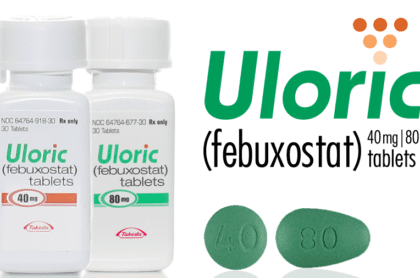Uloric (Febuxostat) was FDA approved in 2009 as a means to treat Gout, a form of arthritis. The FDA has since concluded that there is an increased risk of heart-related death and death from all causes from Uloric and now requiring a boxed label warning.
The makers of Uloric (Febuxostat) are also recommending that health care professionals reserve prescribing it only to patients that have failed to achieve relief from Allopurinol or those that were unable to tolerate Allopurinol.
The makers of Uloric, Takeda Pharmaceuticals, were forced to include a “precaution” about possible cardiovascular events in patients at the time of release but has since been updated to the most prominent warning, a boxed warning. Sadly, Takeda Pharmaceuticals was able to manufacture and sell Uloric in the US without any complication warning on the drug’s label for years.
A safety trial was conducted to compare the risks posed by both Allopurinol and Uloric. 15 deaths from heart-related causes per 1,000 patients taking Uloric was observed over a year’s time compared to 11 deaths from heart-related causes per 1,000 treated with Allopurinol. Additionally, 26 deaths from any cause, per 1,000 patients, was observed with Uloric use over that year compared to 22 deaths per 1,000 from Allopurinol. This trial, known as the CARE trial, suggested that Uloric was connected to significantly higher risk for fatal cardiovascular events like heart attacks, strokes, and unstable anginas.
The FDA has been fully aware of these potential complications as early as 2009 and even attempted to minimize the heart problems that Uloric could cause by only approving 40mg and 80mg doses as opposed to the 80mg and 120mg doses that Takeda Pharmaceuticals had requested. Sadly, it took until 2018 for the FDA to require the box label warning based on the results of the postmarket trial that was conducted (CARES).
Uloric (Febuxostat) has also been linked to abnormal liver function. People taking Uloric were shown to have three times higher than normal levels of transaminase. While it remains unlcear as to whether Uloric directly heightens those levels, physicians who prescribe Uloric are supposed to conduct a baseline liver test panel prior to starting Uloric and then continue to monitor for any changes.
Uloric (Febuxostat) has also been linked to severe and potentially fatal allergic reactions. Stevens-Johnson syndrome being one of these observations. Approximately one in 10 people who develop this syndrome fall victim and die from the disease.
The deceptive and faulty marketing that has allowed for years of uninformed use regarding the risk of cardiovascular events has led to numerous lawsuits against Takeda Pharmaceuticals.
Learn More Uloric (Febuxostat)
Learn More About Other Prescription Drugs for Gout
A Careful and Healing Gout Diet





